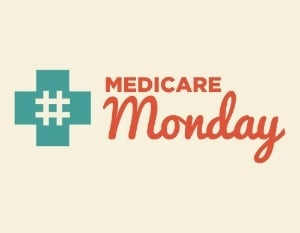Medicare Part D has been successfully providing seniors with comprehensive drug coverage for more than a decade, and one of the cornerstones of the program has been to ensure the sickest and most vulnerable patients have access to the clinically critical medicines they rely on. Seniors facing serious and complex health conditions like HIV/AIDS, cancer, epilepsy and mental illness, rely upon access to medicines that are covered under six specific classes of medicines, more commonly known as the six protected classes.
The six protected classes policy allows patients to access “all or substantially all” of the medicines that treat their specific condition, allowing their doctors to prescribe the most clinically appropriate medicines from the full range of treatment options.
Seemingly similar patients often respond differently to the same drug. Therapies for these six conditions also have complex interactions, side effects, contraindications and other factors that must be considered for patient care, so medicines are not interchangeable in these classes. Thus, patients with these conditions need access to the medications that are most effective in treating their condition based on factors unique to each patient.
Moreover, many patients living with these conditions must attempt a variety of therapies before they and their doctor settle on the most appropriate treatment. For example, certain patients with HIV have resistance to certain treatments, making it crucial from a public health perspective that all HIV patients have access to the full range of therapies. Similarly, patients with cancer often need personalized therapies. In short, in the six protected classes there is no “one size fits all.”
That is why it is particularly concerning that the Centers for Medicare & Medicaid Services (CMS) recently issued a proposed rule that would weaken the six protected classes to such an extent that the classes could no longer be considered truly “protected.”
CMS’s proposal would let Part D plans restrict access to medicines by: using prior authorization or step therapy for patients already stable on a six protected classes medicine, including patients who are taking HIV/AIDS medicines; excluding a protected class drug if the drug is simply a new formulation regardless of whether the old formulation is still on the market; and excluding a drug from the protected classes if its list price increased more than general inflation.
These changes are not only detrimental to seniors and their care, they are unnecessary. Part D plans already have substantial tools to manage spending in the protected classes and encourage the use of generics, where possible. Protected class status does not affect plan sponsors’ ability to negotiate and in fact, MedPAC found that cumulative prices for protected class medicines actually decreased by 13 percent between 2006 and 2014. That is because Part D plans already manage access to most drugs in the protected classes through formulary tiering and utilization management for patients new to therapy.
In addition, these changes would violate the Part D non-discrimination provision which prohibits CMS from approving a Part D plan if “the design of the plan and its benefits… are likely to substantially discourage enrollment by certain Part D eligible individuals.”[1] In fact, CMS itself has previously explained that the six protected classes are “necessary to ensure that Medicare beneficiaries reliant upon these drugs would not be substantially discouraged from enrolling in Part D plans.”[2]
Since the proposed rule’s introduction, many patient groups dedicated to fighting for the patients in these classes have expressed significant concern at how these proposals would weaken the ability for these seniors to access the critical medicines they rely on. Letting plans restrict access for some of the sickest and most vulnerable Part D beneficiaries would reduce adherence to those medicines, jeopardizing their health, increasing their need for inpatient care and resulting in poorer outcomes for seniors and potentially higher costs for taxpayers.
[1] Social Security Act § 1860D—11(e)(2)(D)(1).
[2] Medicare Prescription Drug Manual, Chapter 6, 30.2.5 (Jan. 15, 2016).



